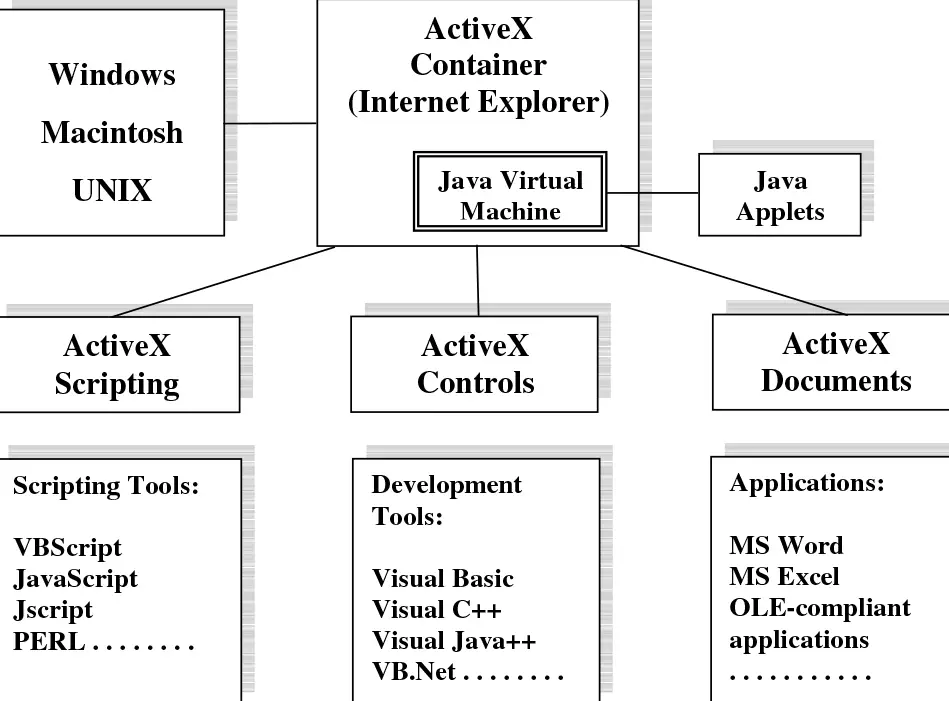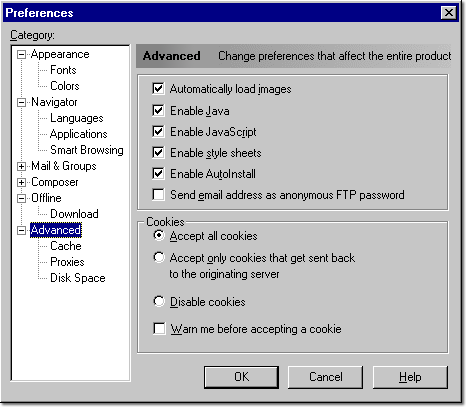| Lesson 9 | Configuring browsers for cookies and ActiveX |
| Objective | Configure a browser to accept or reject cookies and ActiveX controls. |
Configuring Browsers for Cookies and ActiveX
What are ActiveX Controls?
ActiveX controls are small programs that are downloaded by a browser and executed on the user's computer.
For example, it is possible for a malicious ActiveX control to reformat a user's hard disk drive or wipe out critical system files.
You can configure Internet Explorer to set automatic ActiveX control activation as your default. Otherwise, potentially malicious ActiveX controls or plug-ins may run without signature checking or without your knowledge.
You can configure Internet Explorer to set automatic ActiveX control activation as your default. Otherwise, potentially malicious ActiveX controls or plug-ins may run without signature checking or without your knowledge.
Accepting or rejecting cookies
ActiveX Technology
One of the most attractive features of ActiveX technology is the ways in which components can be created.
Figure 2-9 illustrates the ActiveX family, including tools that can be used to develop controls.
An ActiveX control is defined as "a software component that performs common tasks in standard ways." The ActiveX controls specification specifies a standard set of interfaces that COM objects can support to carry out particular actions. Components need to interact with the code that uses them, and the ActiveX controls specification determines rules for creating so-called control containers.

Control Container
A control container is client software that knows how to use an ActiveX control. Applications developed using different computer languages, such as Visual Basic and C++, Java, can serve as control containers. Web browsers, such as Microsoft Internet Explorer, also are examples of containers. Netscape Navigator did not originally support ActiveX. As a result, web pages containing ActiveX controls did not function properly in Netscape browsers. ActiveX controls for the Web are simple objects on a Web page that provide a user interface and support these interfaces. They add an interactive component to the page and allow users to communicate with the page.
The code for a control can also be stored on aWeb server and downloaded and executed when the browser or Web page requests them.
An ActiveX control is compiled code with file extension.ocx.
As shown in the Internet Explorer Properties dialog box below, you can:
- Accept all cookies
- Accept cookies on a case-by-case basis
- Never accept cookies
